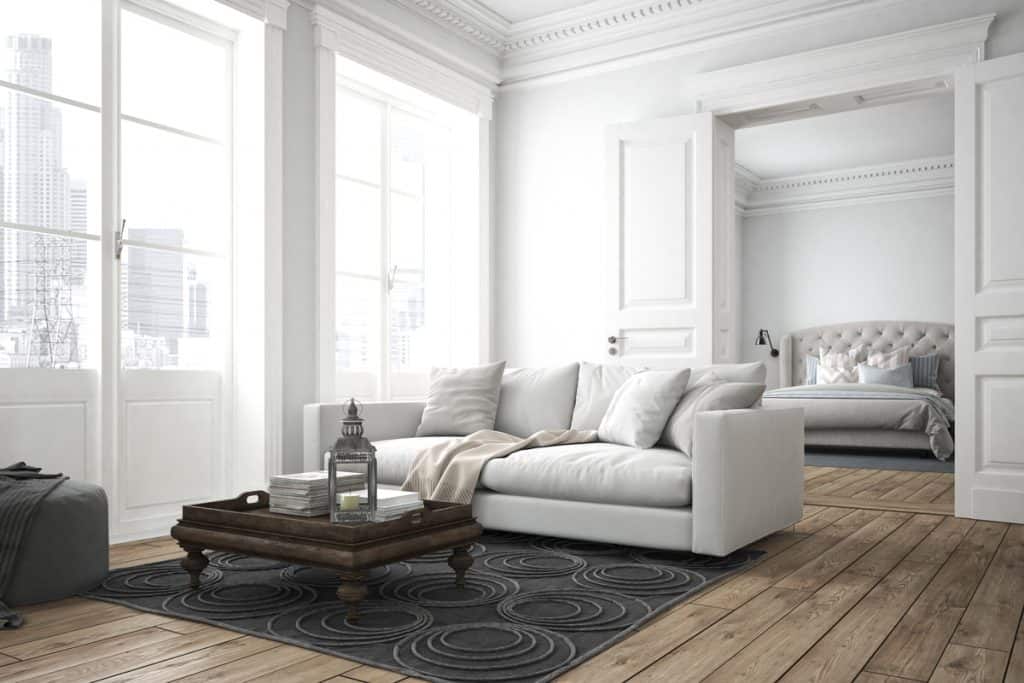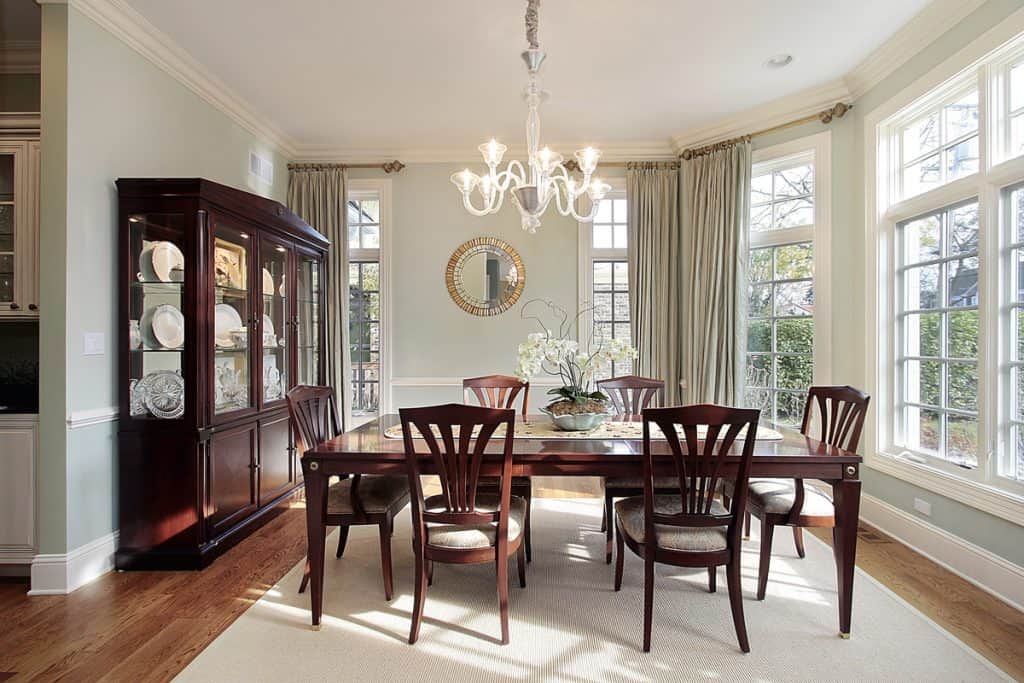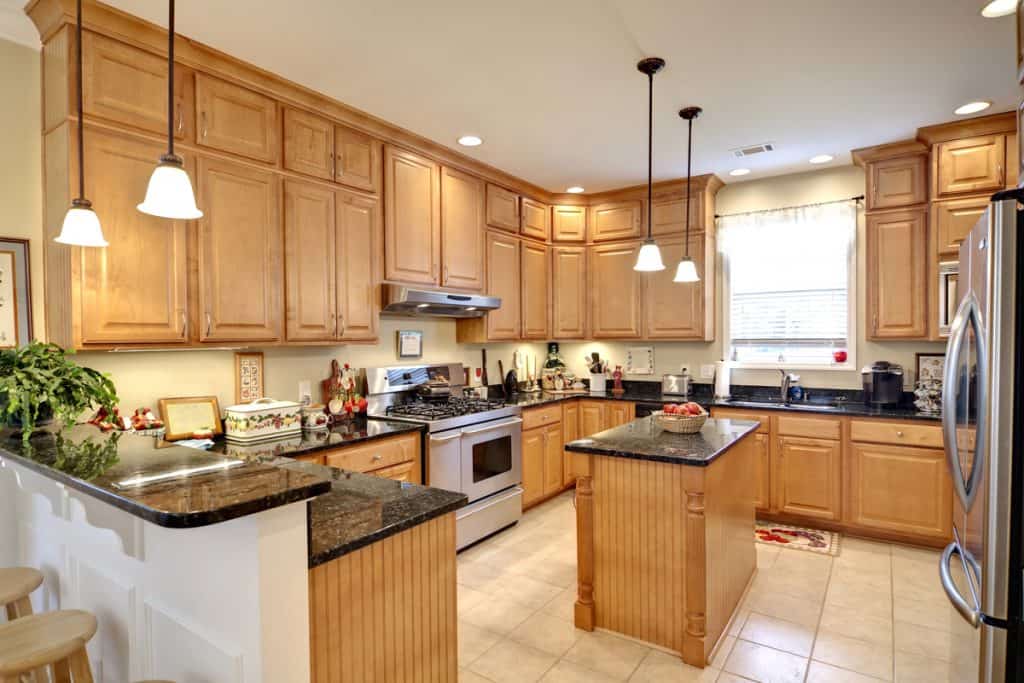Crown molding gives a room an elegant touch and highlights the architectural features of the walls and ceilings. If you plan on installing crown molding in your home, you might be wondering which rooms should have crown molding and which rooms would be better left without it. We did some research to find out which rooms should have crown molding.
Crown molding is best used in the main rooms in the home:
- Living Room or Family Room
- Dining Room
- Kitchen
We will discuss and provide inspiration for each of these rooms and discuss the rooms where crown molding isn't necessary.

Best Rooms for Crown Molding
Living Room/Family Room
We sometimes add affiliate links and content that was curated and created by our team with the help of advanced ai tools to help showcase the best design styles.

Crown molding is a decorative addition to your walls. Since you spend a lot of your time in the living room and use this area to entertain guests, it is an excellent room for which to invest in crown molding. It is most often used to create a visual separation between the walls and the ceiling. However, you can also use crown molding to frame your windows, highlight archways and built-shelving, or adorn a fireplace.
Dining Room

In addition to making a room look more elegant, crown molding frames a room and helps the main features stand out. A dining room typically contains a table that is the star of the room, making it an excellent place to add crown molding. The crown molding will help highlight and enhance the dining room table.
Kitchen

The kitchen is another popular room for crown molding because it is particularly attractive to frame upper cabinets. Adding crown molding for this purpose gives your kitchen a more seamless look and makes the room look more put together.
Rooms That Can Do Without Crown Molding
Bedrooms
The jury is still out on whether or not crown molding belongs in the bedroom. Because bedrooms aren't a central room in the house that guests will see, some believe it is an unnecessary expense to put crown molding in them.
However, if you are going for a more elegant style for your bedroom, crown molding will help achieve that look. While it probably isn't worth it to put crown molding in your kids' rooms or a guest room that isn't used often, it can be a nice addition to a master bedroom if it fits the look you are creating.
Bathroom
Since the bathroom is another room where guests will not be visiting, you can skip the crown molding in the bathroom. This can also be the first room you can eliminate if you are on a limited budget and want to be strategic about installing crown molding.
Keep in mind that just because the bathroom does not require crown molding, it doesn't mean you can't install it if you want to. Crown molding helps bathrooms appear bigger by making the ceiling look higher.
Does Crown Molding Add Value to a House?
Crown molding does have the potential to add value to your house, but many factors determine whether the crown molding will make a difference. Installing crown molding is considered an improvement to your home, so it will help increase your home's value in that sense.
Crown molding will also increase your homes' appeal because potential buyers will find your home more attractive. However, crown molding is not a bandaid. Installing it will not increase your home's value if there are significant problems or if the crown molding doesn't match your overall aesthetic.
Is Crown Molding Hard to Install?
Crown molding is difficult to install because it needs to be cut at an angle instead of a standard straight cut. Crown molding also lays on the wall at an angle. An easier and cheaper option is foam crown molding instead of wooden molding. It is more pliable and easier to cut.
Click here to see this foam crown molding kit on Amazon.
How Much Does it Cost to Install Crown Molding?
Crown molding ranges from $6 to $25 per foot, depending on the material you choose. Wood and plaster tend to be cheaper, while metal tends to be the most expensive option. If you are planning on installing the crown molding yourself, you will only have to worry about this cost and the cost of any materials needed to install the crown molding.
You will need to purchase or buy tools such as a saw, a stud finder, and a tape measure. You will also need consumables such as nails and sandpaper. While this can be pricy, especially if you have to purchase the larger tools, it will still be cheaper than hiring a professional.
If you choose to have your crown molding professionally installed, you will still have to purchase the materials, but you won't have to worry about buying the tools. You will need to pay labor, though, which could cost between $1,000 and $1,200 depending on the number of rooms that need crown molding installed.
What Can You Use Instead of Crown Molding?
While crown molding is a great choice, there are other trim options that you can use instead. Using an alternative is cheaper than installing authentic crown molding, and it is easier to install. There are a few popular alternatives.
Medium-Density Fiberboard
Medium-density fiberboard molding is made up of a mixture of wood chips and shavings, sawdust, and resin. While this doesn't sound like trim material, the result looks similar to traditional crown molding when it is installed. Medium-density fiberboard is significantly cheaper than conventional crown molding, so you might be more likely to be able to trim your entire home, even if you have a budget.
There are drawbacks to this option, however. Medium-density fiberboard cannot be used where there is high humidity. No matter where you live, this option is not suitable for a bathroom. If you live in an area that is always humid, you may not be able to use this option at all.
Click here to see this medium density fiberboard molding made for a fireplace on Amazon.
Polyurethane
Easier to find and a more popular option than medium density fiberboard is polyurethane. Polyurethane is less expensive than traditional crown molding, and because it is not natural wood, it is more resistant to threats such as wood rot and insect infestation.
A drawback to polyurethane is that it is more easily damaged. The material isn't as strong as wood, so it is not recommended for places where there is high traffic or a chance that something can damage the molding.
Click here to see this example of polyurethane crown molding on Amazon.
Summary
Deciding where to install crown molding in your home is a matter of personal preference. As we discussed, the kitchen, living room, and dining room are good rooms in the house to install crown molding if you want to use it strategically and still get the maximum effect.
However, you are certainly not limited to just installing crown molding in these areas. Crown molding can enhance any room's design, especially if you are trying to achieve an elegant look and make a room look larger. There is virtually no room in your home where crown molding would be a detriment.
Please be advised, though, that rooms with vaulted or slanted ceilings require special care. If you have rooms with these ceilings, consider leaving the installation to a professional.
If you are looking for more inspiration for including crown molding in your room designs, check out our related articles:



